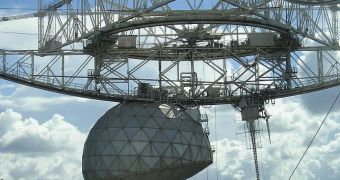A few years ago, astronomers identified a remote asteroid, nicknamed Apophis, that was discovered to have a small chance of impacting our planet in 2036. Preliminary investigations have, however, shown that these chances are fairly remote, and so plans were devised to conduct more in-depth investigations later on. The massive Arecibo Observatory, based in Puerto Rico, was scheduled to deal with this task, of mapping more accurately Aphophis' trajectory, but now lack of funding threatens to make this study impossible.
There is currently no clear date for when the observations are supposed to begin, but most experts involved in the study believed that the research would take place sometime between 2011 and 2013. Over time, January 2013 became the unofficial date for the beginning of the study, but now new budget plans threaten to make that impossible. According to officials managing Arecibo, the observatory still needs an extra $2-3 million to continue with operations. However, they are unlikely to get these funds, analysts say.
Dr. Michael Nolan, the director of the impressive facility – which houses the largest single-aperture telescope in the world (1,000 feet, or 305 meters) – told the BBC News that he is only “moderately optimistic” that the money for this operation will be approved. What is worrying is that only this particular telescope is sufficiently sensitive to allow for the direct tracking of Aphophis. “If we measure [Apophis] in 2013, there is something like a 95% chance that we'll be able to prove that it can't hit the Earth in 2036,” he adds, quoted by the British news agency.
“If you have a regular telescope, you can tell where it is from left to right in a sense. The radar measures distance, so it is forward to backwards in that same sense. If you do all of those at once, you get a very good measurement of where it is,” Nolan adds. “Unique facilities such as the Arecibo radar can provide us with clear and reliable data on the trajectory of an object such as Apophis, thus helping us determine accurately whether it will collide with Earth in the future,” concludes the chair of the UN Working Group on near-Earth objects (NEO), professor Richard Crowther.

 14 DAY TRIAL //
14 DAY TRIAL //